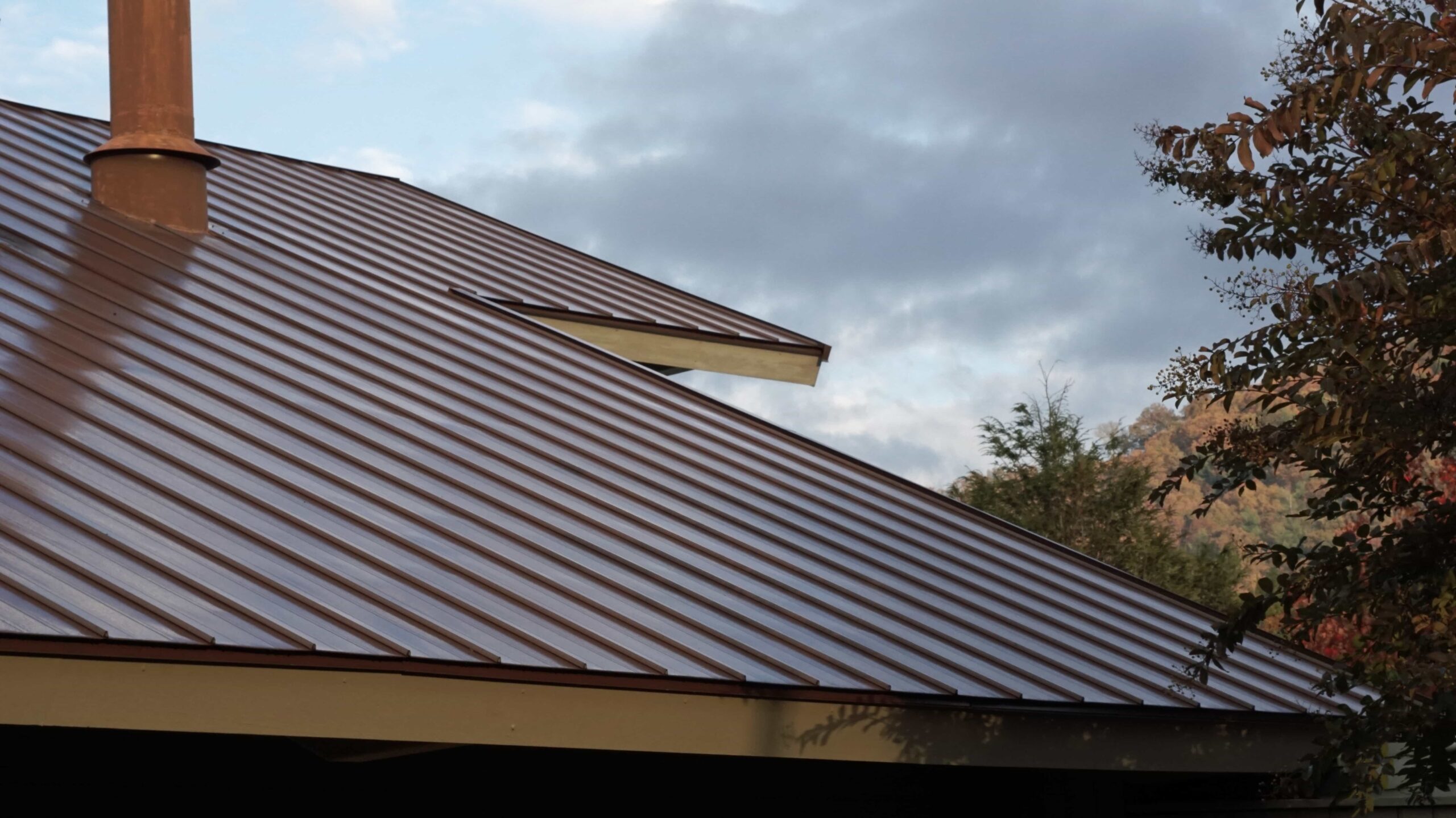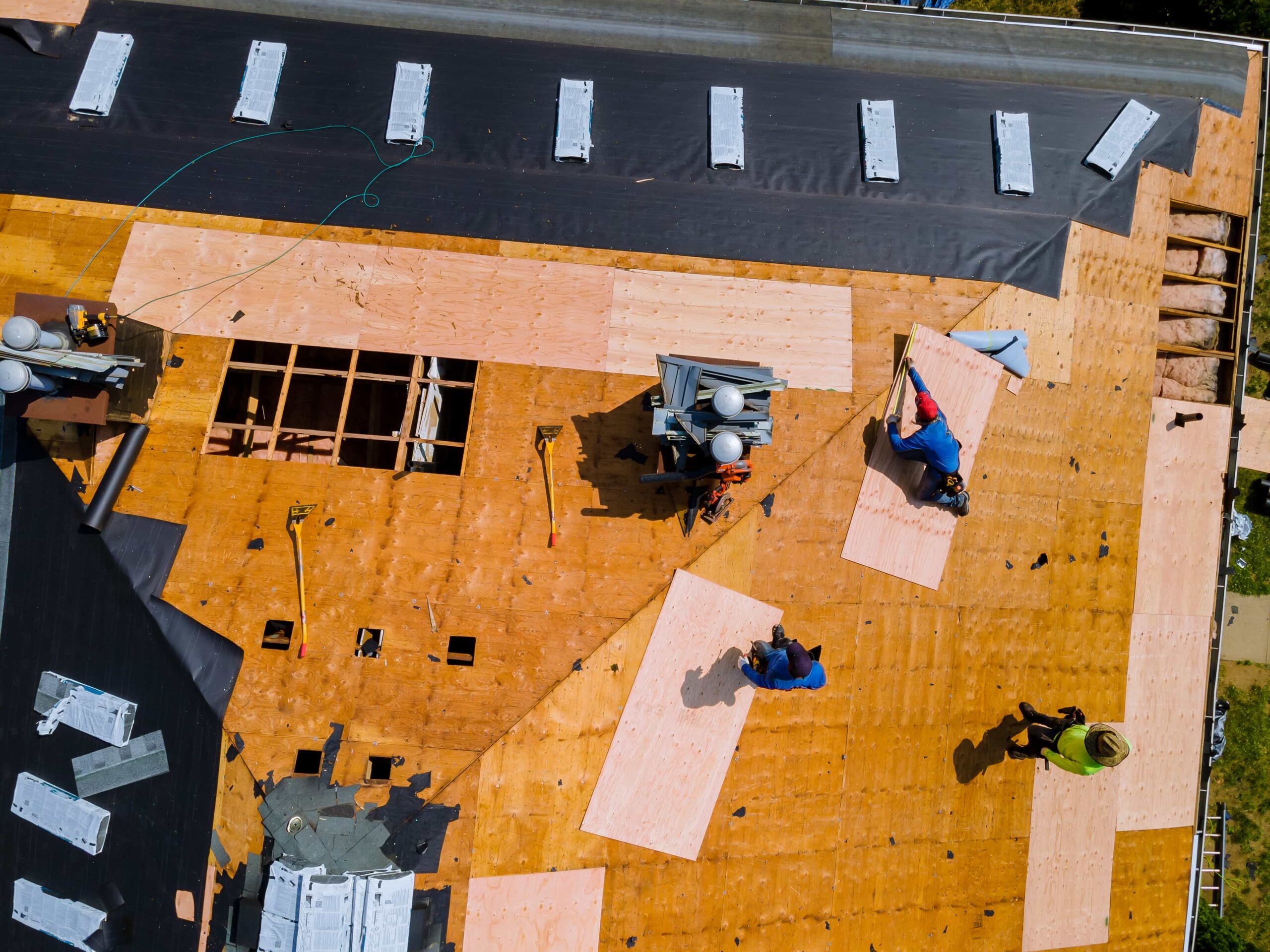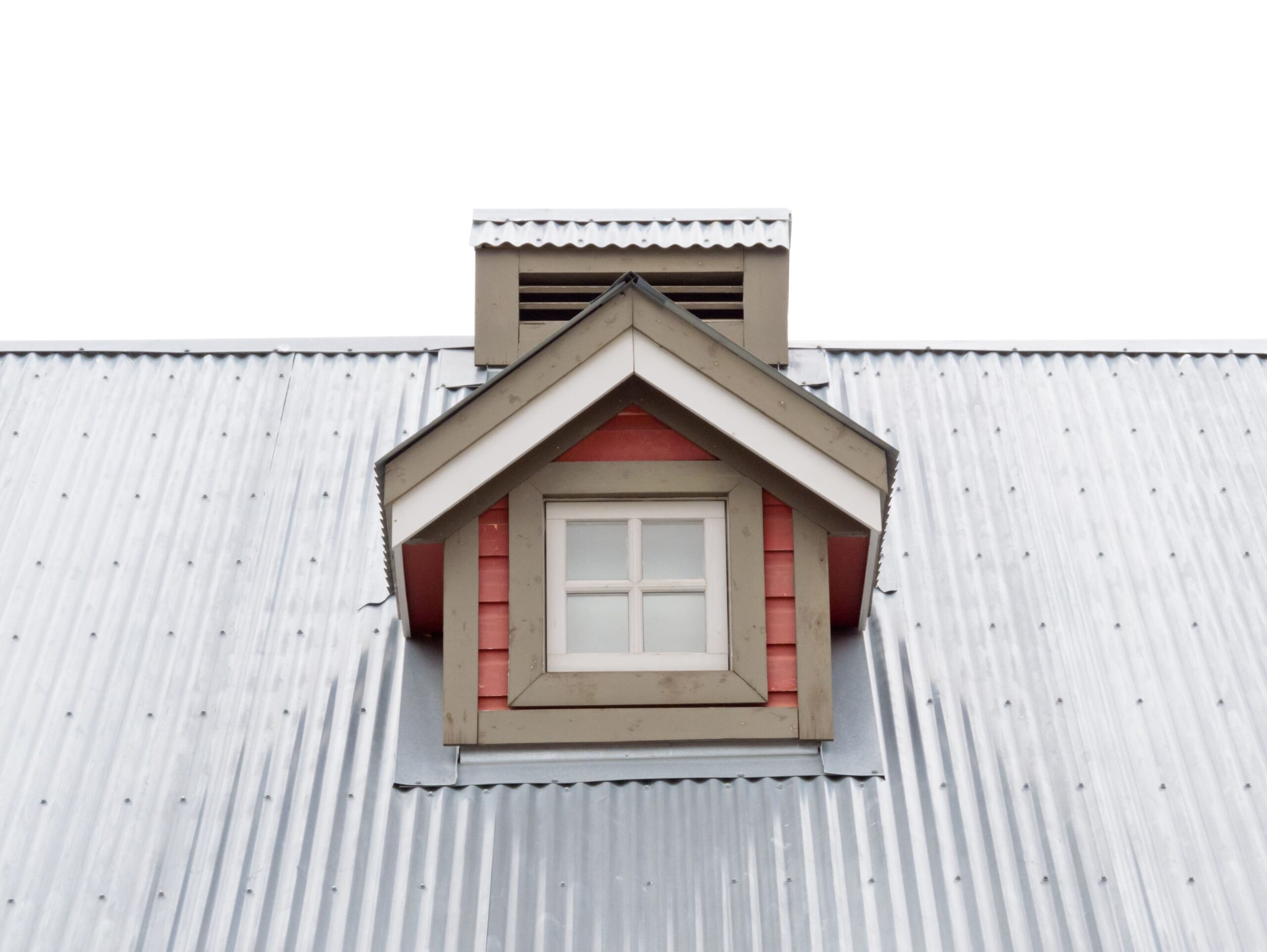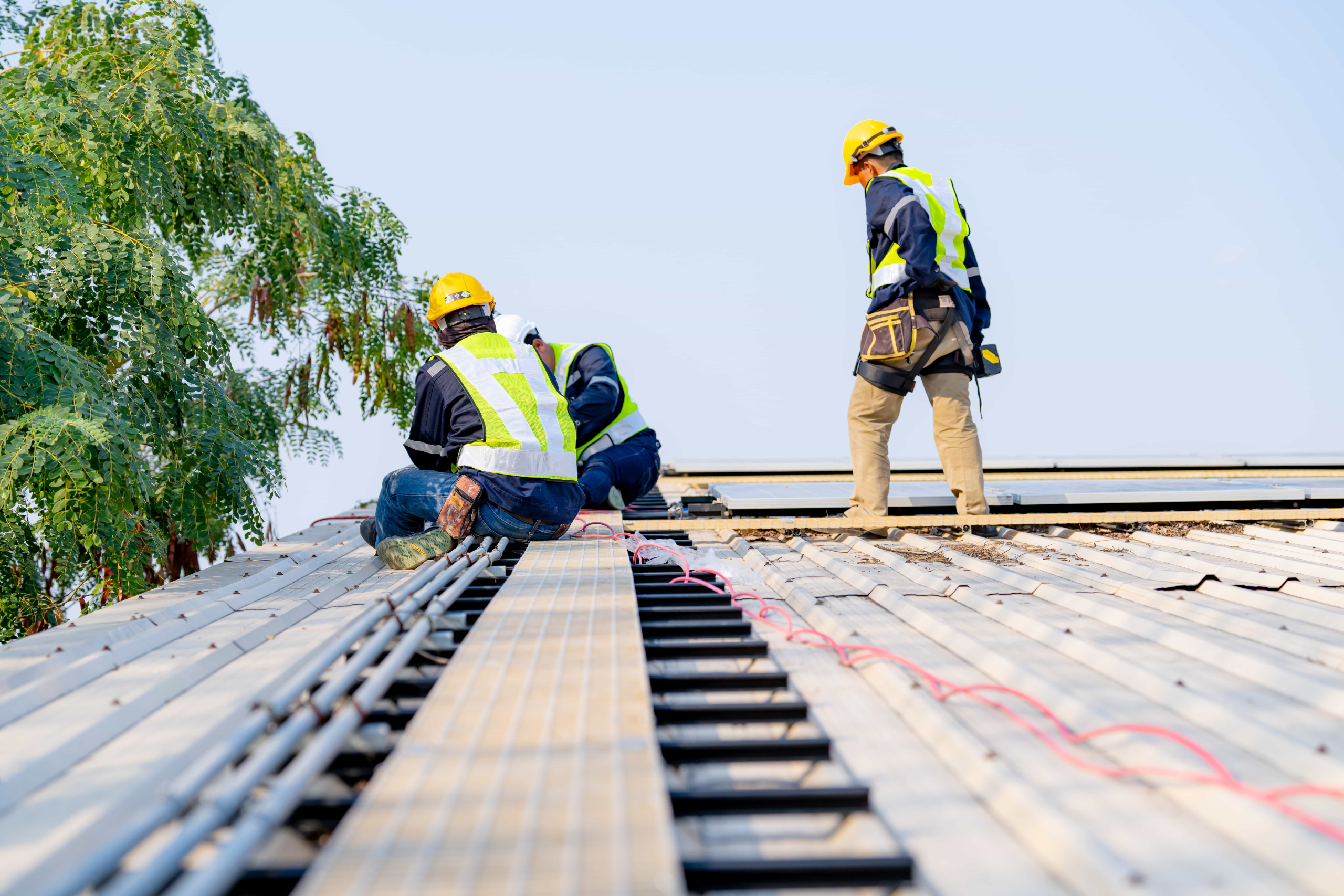Difference Between Hip and Gable Roofs
The purpose of your roof is to safeguard the structure of your home and all its contents involving you and your family. For homeowners, there are plenty of options for roof designs that can affect the efficiency of your roof against the weather. Most residential homes are sloped so that sleet, water and melting snow can run into the gutter system.
The primary difference between a Hip roof vs Gable roof is sloped on the sides—the hip roof slope downwards from all sides towards the home walls. On the other hand, gable roofs consist of two sloping sides that form triangular shapes, extending from the roof’s eaves to the ridge peak.
Let’s assist homeowners in deciding which roof style suits them. We’ll explore gable vs hip roofs.
What is a hip roof and gable roof?
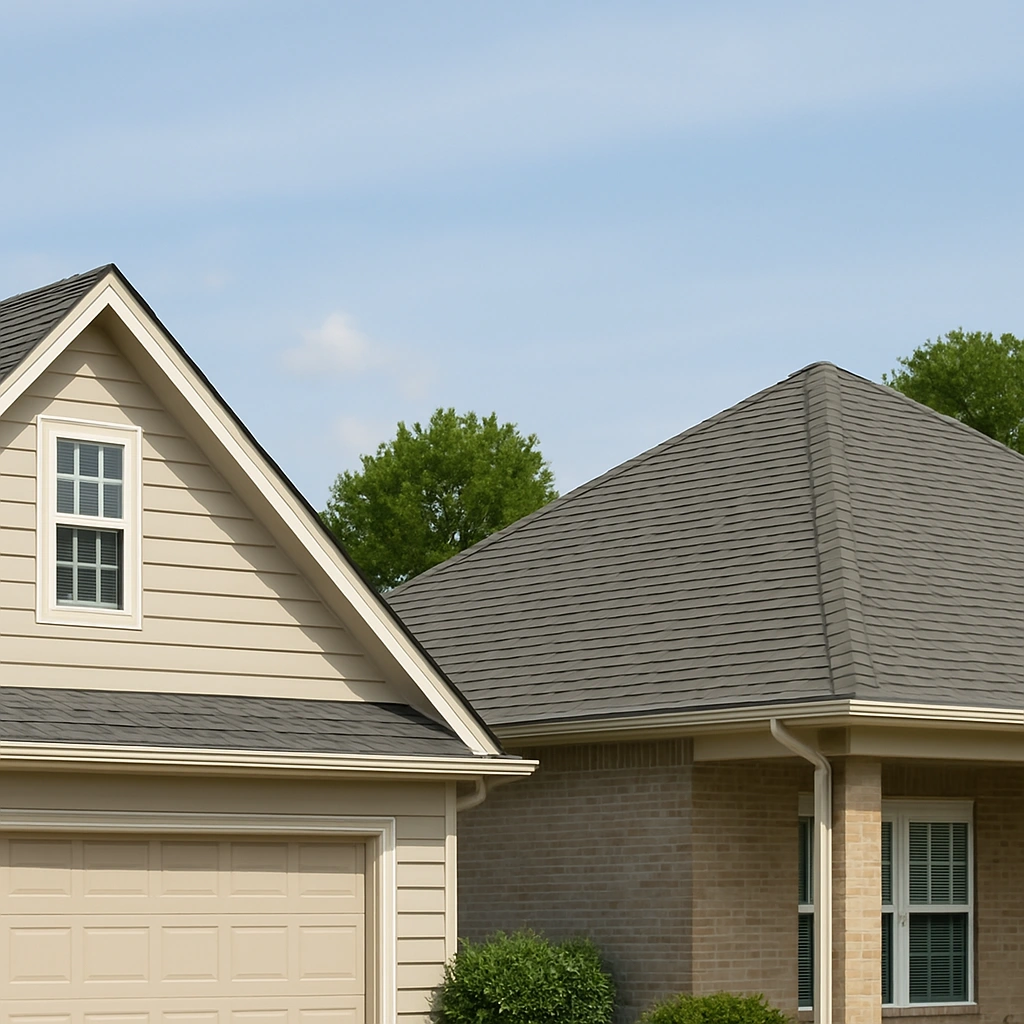
A hip roof has slopes on all sides, creating a pyramid-like shape. Each roof slide slopes downward from the ridge to the eaves, forming a gentle angle with no vertical ends. Because of evenly distributed slopes, hip roofs are recognized for their resistance and stability to strong winds.
Hip Roof Variations
- Half-Hip Roof
- Pavilion Roof
- Mansard Roof
A Gable roof consists of triangle-shaped slopes extending from the bottom of the roof’s eaves to the ridge’s peak. This triangular portion of the roof offers a distinctive look to the structure. It is the most common roof design on houses, buildings, barns and commercial structures.
Gable Roof Variations
- Front Gable roof
- Cross-Gable roof
- Dutch Gable roof
Gable Roof vs Hip Roof
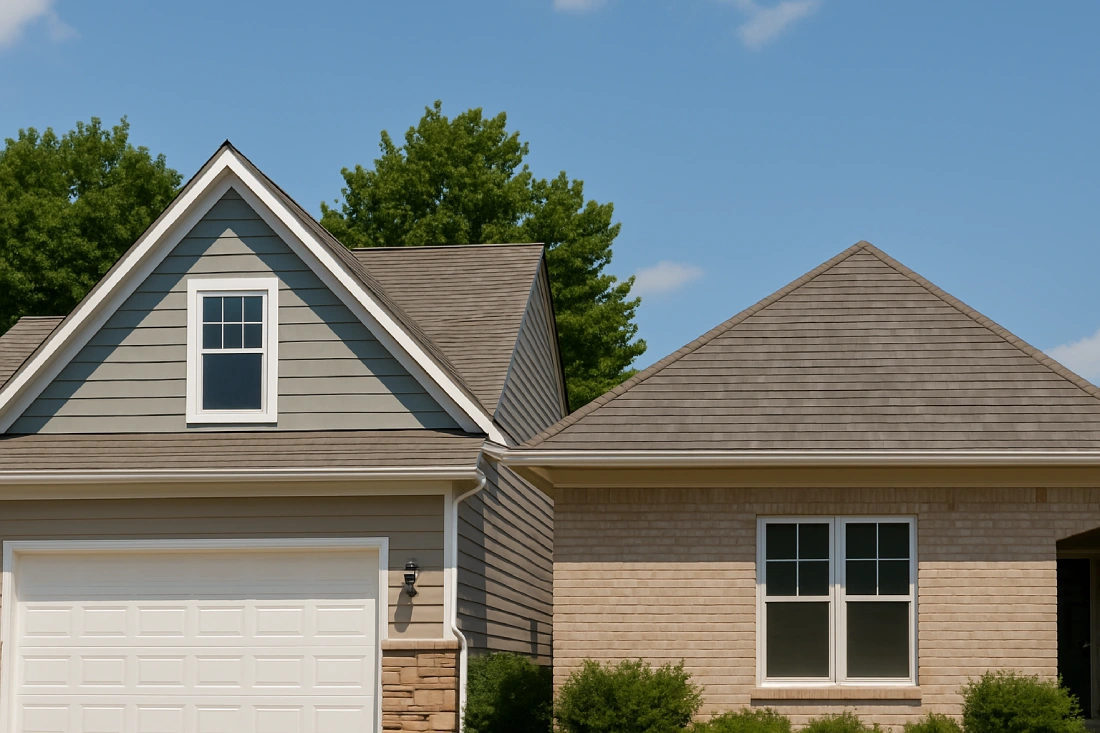
Hip and gable roofs are two standard roof designs with distinct characteristics. Here is the discussion about the differences between hip and gable roofs:
Shape
A gable roof has two sloping sides that form a triangular shape, with a peak in the middle and two straight slopes on every side. While on the other hand, a hip roof has a pyramid-like shape with no vertical gable ends that make slopes on all sides.
Slope
Talking about the slope, gable roofs have steeper slopes than hip roofs. It permits adequate runoff, making them suitable for areas with higher rainfall or snow. Hip roofs have a more gradual slope that offers more balance and a symmetrical appearance.
Stability
Hip roofs are considered more stable and resistant when dealing with strong winds. The slopes on all four sides and the self-bracing design make them sturdy, durable roofing options and an excellent choice for homeowners in the snow and high winds. On the other hand, Gable roofs are considered more susceptible to wind uplift because of the vertical gable ends.
Usable space
Gable roofs have more attic spaces for storage because of their triangular shape. It makes them beneficial if any additional usable space is required. At the same time, hip roofs might have less space due to slopes on all sides. Low roof slopes might have become problematic and taken the required steps in some cases. If you want a low slope for your roof, a hip roof might be the right roofing option for you.
Architectural style
Gable roofs are significantly associated with classic or traditional architectural styles, offering a timeless and recognizable look. On the other hand, hip roofs are often determined in modern or contemporary designs, providing a sleek and uniform appearance.
Cost
Gable roofs are more cost-effective and accessible than hip roofs, which need more complex framing and additional materials.
Hip vs Gable roof: which is best for you?
You might have gone through the differences between both roofs and now it is simpler to consider which type of roof best suits you. You can see the comparison from its look to cost, including its architectural design.
Excel Construction Group can guide you to a better home or commercial property choice. Our professional will be happy to help you!
Call us now or visit our website https://www.excelcg.com/ to learn more about the best roof for you.
The purpose of your roof is to safeguard the structure of your home and all its contents involving you and your family. For homeowners, there are plenty of options for roof designs that can affect the efficiency of your roof against the weather. Most residential homes are sloped so that sleet, water and melting snow can run into the gutter system.
The primary difference between a Hip roof vs Gable roof is sloped on the sides—the hip roof slope downwards from all sides towards the home walls. On the other hand, gable roofs consist of two sloping sides that form triangular shapes, extending from the roof’s eaves to the ridge peak.
Let’s assist homeowners in deciding which roof style suits them. We’ll explore gable vs hip roofs.
What is a hip roof and gable roof?

A hip roof has slopes on all sides, creating a pyramid-like shape. Each roof slide slopes downward from the ridge to the eaves, forming a gentle angle with no vertical ends. Because of evenly distributed slopes, hip roofs are recognized for their resistance and stability to strong winds.
Hip Roof Variations
- Half-Hip Roof
- Pavilion Roof
- Mansard Roof
A Gable roof consists of triangle-shaped slopes extending from the bottom of the roof’s eaves to the ridge’s peak. This triangular portion of the roof offers a distinctive look to the structure. It is the most common roof design on houses, buildings, barns and commercial structures.
Gable Roof Variations
- Front Gable roof
- Cross-Gable roof
- Dutch Gable roof
Gable Roof vs Hip Roof

Hip and gable roofs are two standard roof designs with distinct characteristics. Here is the discussion about the differences between hip and gable roofs:
Shape
A gable roof has two sloping sides that form a triangular shape, with a peak in the middle and two straight slopes on every side. While on the other hand, a hip roof has a pyramid-like shape with no vertical gable ends that make slopes on all sides.
Slope
Talking about the slope, gable roofs have steeper slopes than hip roofs. It permits adequate runoff, making them suitable for areas with higher rainfall or snow. Hip roofs have a more gradual slope that offers more balance and a symmetrical appearance.
Stability
Hip roofs are considered more stable and resistant when dealing with strong winds. The slopes on all four sides and the self-bracing design make them sturdy, durable roofing options and an excellent choice for homeowners in the snow and high winds. On the other hand, Gable roofs are considered more susceptible to wind uplift because of the vertical gable ends.
Usable space
Gable roofs have more attic spaces for storage because of their triangular shape. It makes them beneficial if any additional usable space is required. At the same time, hip roofs might have less space due to slopes on all sides. Low roof slopes might have become problematic and taken the required steps in some cases. If you want a low slope for your roof, a hip roof might be the right roofing option for you.
Architectural style
Gable roofs are significantly associated with classic or traditional architectural styles, offering a timeless and recognizable look. On the other hand, hip roofs are often determined in modern or contemporary designs, providing a sleek and uniform appearance.
Cost
Gable roofs are more cost-effective and accessible than hip roofs, which need more complex framing and additional materials.
Hip vs Gable roof: which is best for you?
You might have gone through the differences between both roofs and now it is simpler to consider which type of roof best suits you. You can see the comparison from its look to cost, including its architectural design.
Excel Construction Group can guide you to a better home or commercial property choice. Our professional will be happy to help you!
Call us now or visit our website https://www.excelcg.com/ to learn more about the best roof for you.
Schedule a Free Inspection

Mon – Fri
9am : 5pm
Saturday
10am : 2pm
Sunday
Closed
CONTACT INFORMATION
ECG Corporate Location
TEXAS – COLORADO – OKLAHOMA | ➥ SEE ALL DIVISIONS
ECG COMMERCIAL

